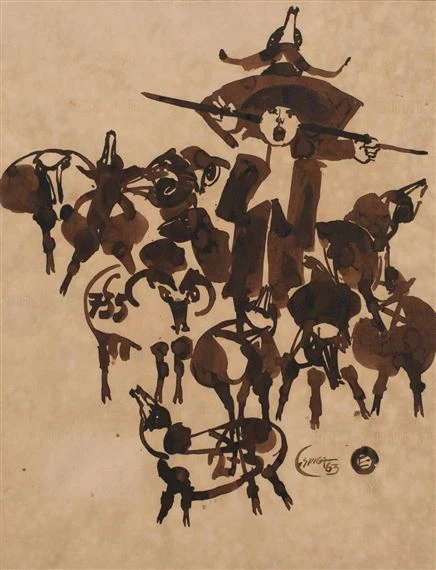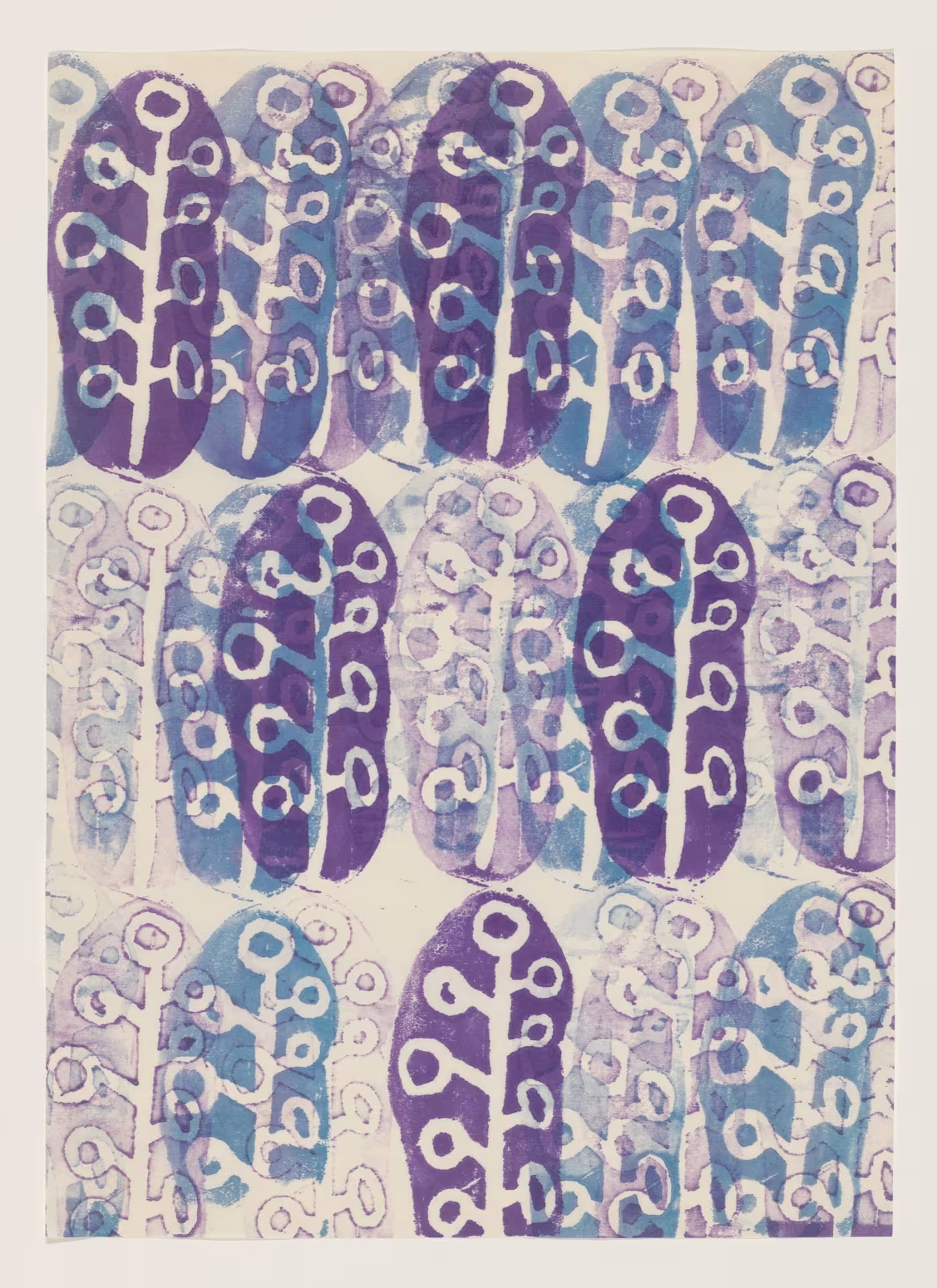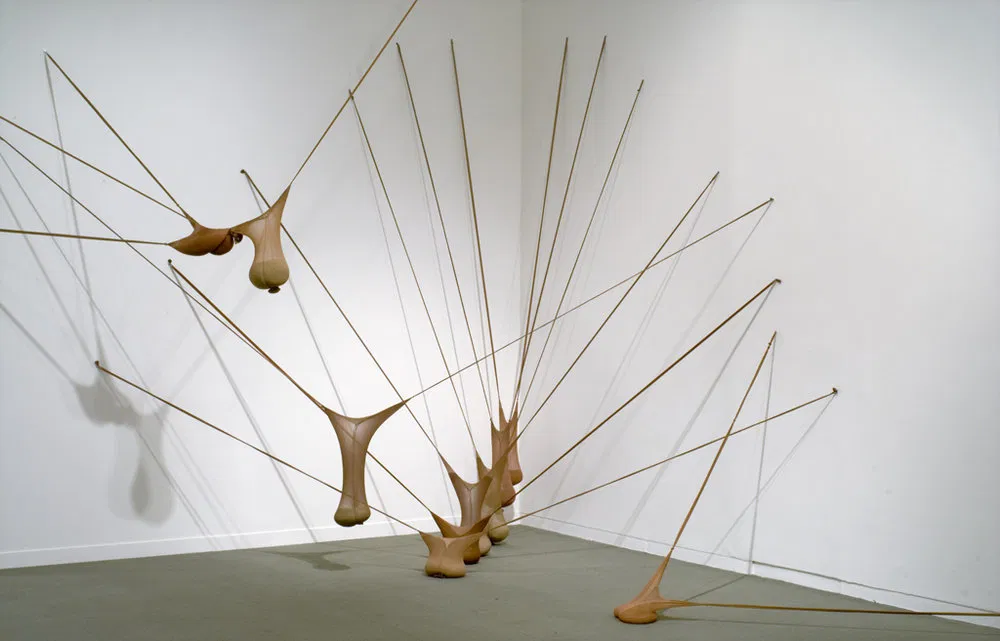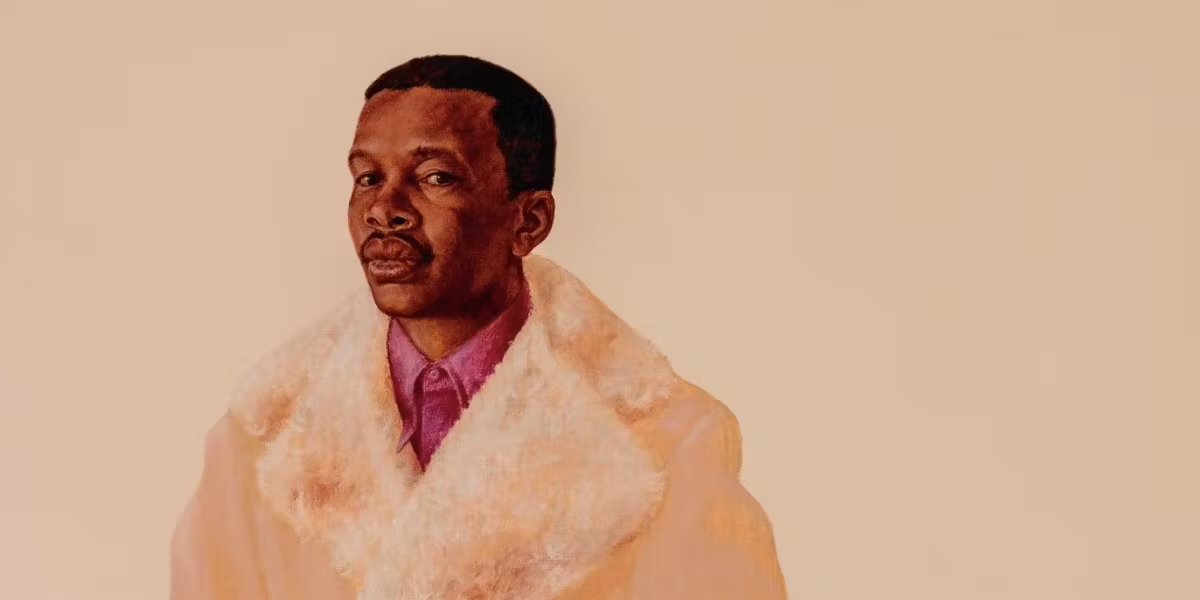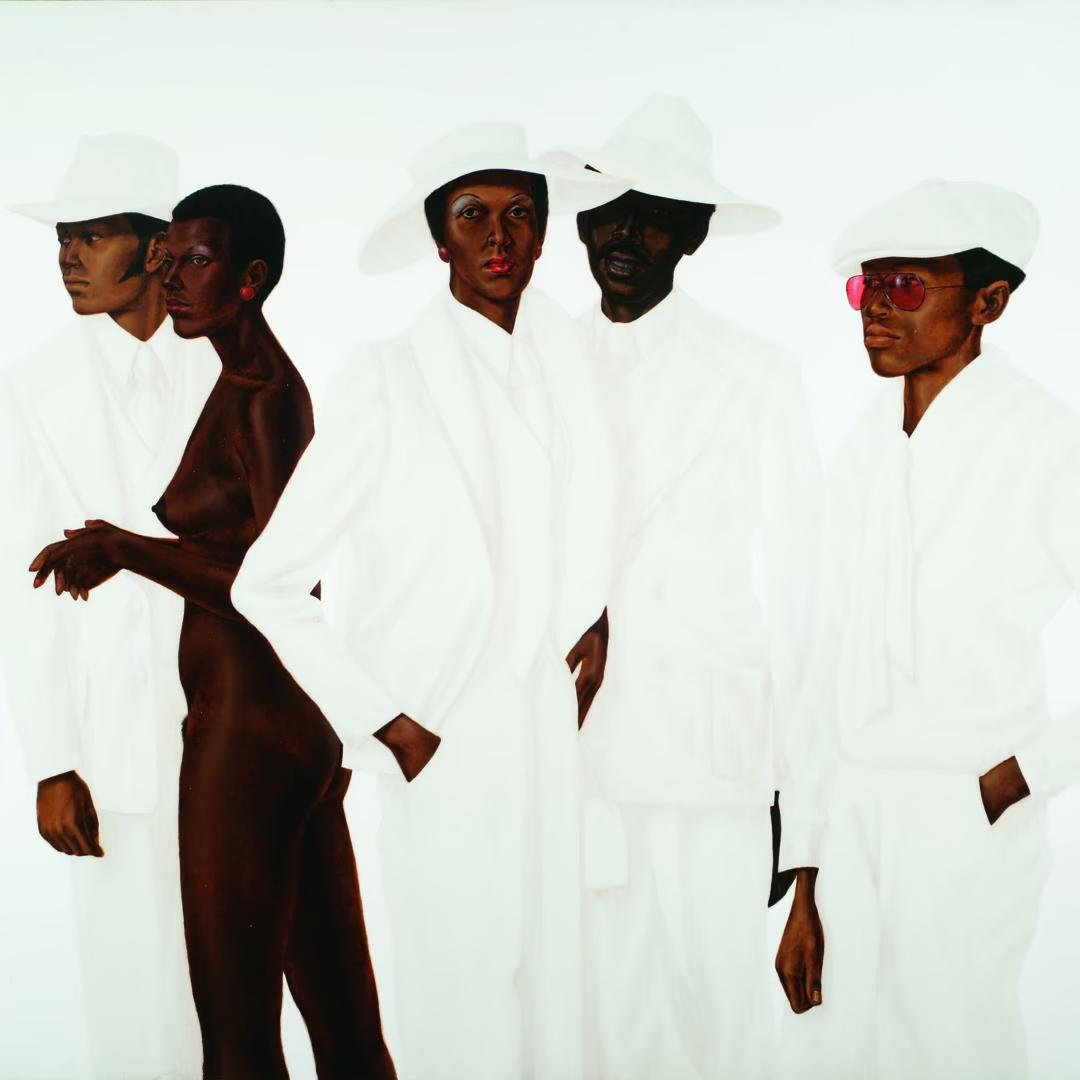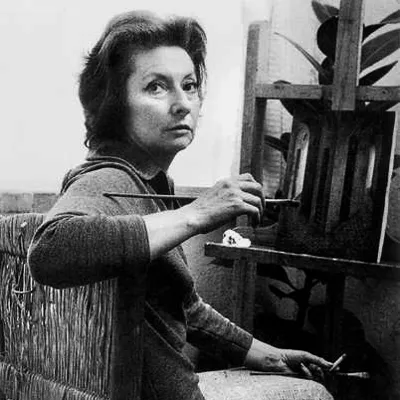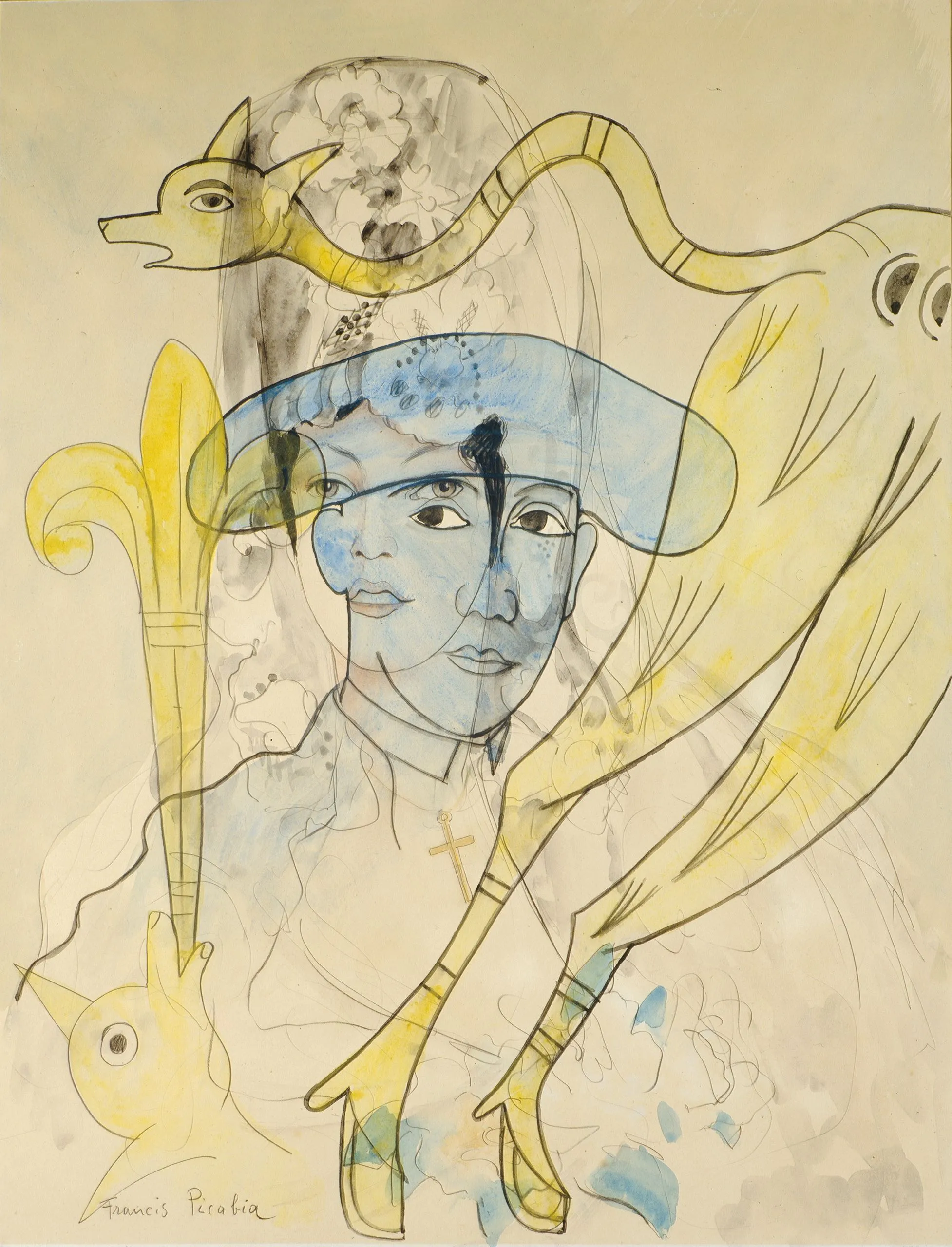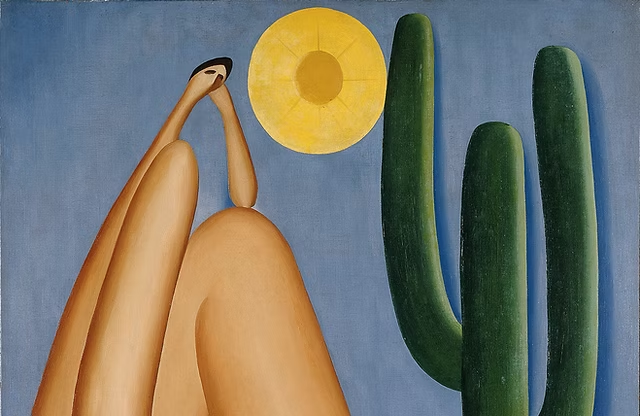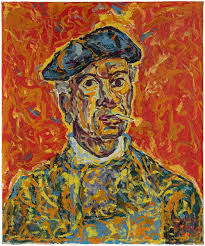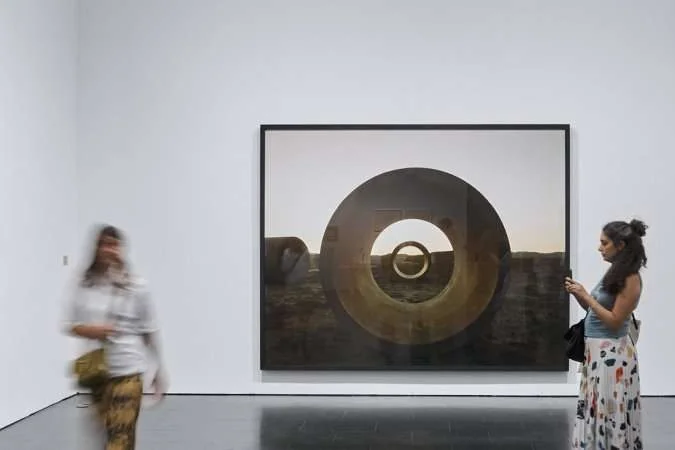The World's Best 20 Artist Estates to Watch in 2025
- Artelier
- Jun 18
- 17 min read
Updated: Jul 1
The UK-based art consultancy Artelier has created a guide spotlighting 20 artist estates to watch around the world — hidden gems with rich stories and untapped potential. Whether you're a collector, curator, or cultural explorer, these are names to know and watch closely.

Introduction
Artist estates are increasingly influencing the future art market trends of 2025 and reshaping the cultural landscape. They draw visitors to museums, shift numbers in the investment market, and invite us to review how artistic legacies are preserved and valued through strategic art legacy management.
While some famous artist estates dominate the billboards and exhibitions, many of the best artist estates of 2025 however remain under the radar—whether due to location, institutional silence, or critical oversight. Despite this, we can see that they create masterpieces refined through decades of dedicated practice, both rich with historical context and profound meaning. For savvy collectors, advisors, and investors, these artist estates 'in progress' represent a unique investment opportunity.
In this article, Artelier’s team of art consultants highlight the top artist estates to watch in 2025. Selection is based on merit and long-term potential: undiscovered archives, immersive studio histories, renewed cultural relevance, or crucial links to pivotal movements and moments. Some are destined for major rediscovery, while others are already gaining momentum through exhibitions, acquisitions, and scholarly attention. Either way. these are the artist foundations of 2025 that could reshape both institutional priorities and private collections.
Whether you’re expanding a collection, advising clients, or seeking promising avenues for cultural patronage, this guide offers an essential overview of the 20 best artist estates to watch in 2025, set to shape the market and cultural discourse well into the future.
Jump straight to your preferred section:
View all Artists
Artist Estates Represented by Artelier Art Consultancy
Conrad Atkinson, UK
Known for:
Politically charged conceptual art; Northern Irish conflict; labour rights; environmental issues
About:
Conrad Atkinson (1940-2022) is most famous for his politically engaged conceptual art that addresses social justice issues such as labour rights, class struggle, and political conflict—especially related to Northern Ireland and global human rights. His work often combines photography, installation, and text to challenge power structures and highlight marginalised voices. One of his best-known projects is the “Landmine” series from the 1990s, which critiques conflict zones across the world. Atkinson’s art is recognised for its sharp social critique and activism, blending art and politics in a way that remains relevant today.
Why to watch:
Atkinson was one of the UK’s most socially engaged conceptual artists, yet his estate remains relatively under-activated. His early work on The Troubles, trade unions, and ecological themes is now strikingly relevant. With institutions shifting toward politically urgent programming, Atkinson’s estate is a strong candidate for curatorial rediscovery. Materials like ephemera, photography, and public interventions offer fertile ground for archives, reinstallation, and critical publications.
Espiga Pinto, Portugal
Known for:
Multidisciplinary practice across painting, sculpture, performance, and design; Portuguese rural life; post-revolutionary public art; large-scale bronze sculptures; ethnographic and spiritual themes
About:
ESPIGA Pinto (1940–2014) was a prolific and versatile artist whose six-decade career spanned painting, sculpture, design, performance, and film. Widely regarded as one of Portugal’s most complete artists of the 20th century, ESPIGA’s work blended formal innovation with cultural memory—often drawing on themes of rural life, religious festivals, and national identity. He exhibited widely from a young age, beginning with his first solo show at 15. His celebrated 1972 performance Egotemponírico is now seen as a landmark in Portuguese performance art history. In the 1990s, he became widely known for monumental bronze sculptures across Lisbon’s public spaces, juxtaposing geometric abstraction with the human form. His work is held in Portugal’s leading museum collections and international collections across Europe, Brazil, and the United States.
Why to watch:
Despite his significant influence on postwar Portuguese art, ESPIGA Pinto’s estate remains relatively under-recognised in the broader international discourse. His wide-ranging practice—including painting, sculpture, scenography, and public art—offers curators and scholars rich material to explore. His early depictions of Alentejo life now resonate with renewed interest in ethnographic and regional narratives, while his public sculptures and experimental performance work position him as a key figure ripe for rediscovery. As Portugal gains more attention on the global stage, ESPIGA’s multifaceted legacy is well positioned for reappraisal through exhibitions, academic research, and institutional acquisitions.
Other Artist Estates to Watch
Betye Saar (estate-in-progress), USA
Known for:
Assemblage art; African American identity; spirituality and mysticism; racism and historical memory; civil rights activism
About:
Betye Saar (b. 1926) is a pioneering African American artist best known for her powerful assemblage works that confront racism, spirituality, and historical narratives. Emerging during the civil rights era, Saar gained national recognition in the 1970s with her iconic piece The Liberation of Aunt Jemima (1972), which subverted racist imagery to reclaim Black identity and resistance. Her art combines found objects, photographs, and symbols from African, Caribbean, and metaphysical traditions, creating layered narratives that challenge stereotypes and evoke ancestral memory. Saar’s work is celebrated for its deeply personal and political resonance, bridging craft and conceptualism.
Why to watch:
As a foundational figure in American assemblage and Black feminist art, Saar’s work continues to influence contemporary discourse on race, gender, and spirituality. With growing institutional interest in overlooked histories and cross-generational dialogue, her archive and early installations—particularly domestic-scale works—offer critical opportunities for scholarly research, curatorial innovation, and exhibition. Saar’s legacy is central to any conversation about American art and activism in the 20th and 21st centuries.
Corita Kent, USA
Known for:
Bold, colourful serigraphs; pop art; social justice; faith-inspired activism; text-based art
About:
Corita Kent (1918–1986) was an American artist and educator celebrated for her vibrant serigraphs that combine bold colours, graphic design, and inspirational text. Rooted in her faith and commitment to social justice, her work addresses themes such as peace, civil rights, and love. Kent’s unique blend of pop art aesthetics (with a strong nod to Andy Warhol and Dieter Roth) and activist messaging made her a pioneering figure in merging art with social conscience during the 1960s and ’70s. Her uplifting and accessible style continues to influence contemporary artists and designers worldwide.
Why to watch:
Despite growing recognition, Corita Kent’s estate remains ripe for deeper exploration and broader institutional engagement. As interest surges around artists who merge activism and spirituality with visual innovation, Kent’s archives and prints offer rich opportunities for exhibitions, scholarship, and public programming. Her legacy resonates strongly with today’s movements around social change, making her estate an exciting focus for curators and collectors alike.
Dom Sylvester Houédard (dsh), UK
Known for:
Concrete poetry; visual wordplay; experimental typography; religious themes; conceptual art
About:
Dom Sylvester Houédard (1924–1996) was a British poet and Benedictine monk renowned for his pioneering work in concrete poetry—a form that merges visual art with language. His art explores the materiality of words through inventive typography and spatial arrangements, often blending spiritual and philosophical themes. Houédard’s work challenged traditional literary boundaries, positioning text as both image and meaning. Houédard corresponded and collaborated with other key figures in concrete poetry and conceptual art, such as Ian Hamilton Finlay and Augusto de Campos, contributing to a global dialogue that expanded the reach of experimental poetry.
Why to watch:
Though celebrated within avant-garde circles, Houédard’s estate remains underexposed to wider audiences and institutions. With renewed interest in interdisciplinary practices that combine text, spirituality, and visual art, his archives and manuscript collections offer valuable material for curators and scholars. As museums and galleries seek to diversify narratives around language and conceptual art, Houédard’s estate is primed for rediscovery and new interpretations.
Ruth Asawa, USA
Known for:
Wire sculptures; organic forms; modernist public art; community engagement; education advocacy
About:
Ruth Asawa (1926–2013) is celebrated for her intricate wire sculptures that blend organic shapes with modernist abstraction. Drawing inspiration from natural forms and traditional craft techniques, Asawa transformed metal wire into delicate, lattice-like sculptures that seem both airy and complex. Beyond her artistic practice, she was a passionate advocate for arts education, co-founding San Francisco’s influential art school, the School of the Arts (SOTA). Asawa’s work is recognised for its innovative use of materials and its role in shaping postwar American sculpture.
Why to watch:
Though increasingly celebrated, Asawa’s estate continues to offer rich opportunities for fresh scholarship, exhibitions, and public engagement, particularly around her pioneering methods and community legacy. With growing interest in mid-century women artists and public art, her archive and works are ripe for curatorial rediscovery. Institutions and collectors focused on socially engaged art and education advocacy will find Asawa’s estate especially compelling.
Senga Nengudi, USA
Known for:
Performance art; sculptural installations; identity and race; abstract forms; material experimentation
About:
Senga Nengudi (born 1943) is renowned for her innovative sculptural works and performances that explore themes of identity, race, gender, and the body. Best known for her use of unconventional materials like pantyhose, Nengudi creates fluid, abstract forms that challenge traditional notions of sculpture and embodiment. Her work emerged from the vibrant Los Angeles art scene of the 1970s and remains deeply connected to African American cultural history and feminist discourse. Nengudi’s practice merges performance and sculpture to examine resilience, transformation, and the human experience.
Why to watch:
Nengudi’s estate is gaining renewed attention as conversations around race, gender, and materiality evolve in contemporary art. Her pioneering use of everyday materials and performative gestures offers rich potential for curatorial exploration, critical publications, and archival projects. With institutions increasingly prioritising diverse voices and experimental practices, Nengudi’s legacy is destined for wider recognition and impact.
Barkley L. Hendricks, USA
Known for:
Portraiture; African American identity; Black Power movement; photo-realism; vibrant colour palette
About:
Barkley H. Hendricks (1945–2017) is renowned for his striking photo-realistic portraits that celebrate African American identity, style, and culture. His work emerged during the Black Power era, capturing his subjects with dignity, confidence, and a vibrant sense of individuality. Hendricks combined classical portraiture techniques with contemporary social themes, challenging traditional representations and centring Black experience in fine art. His bold use of colour and sharp attention to detail continue to influence artists exploring race, identity, and representation today.
Why to watch:
Hendricks’ estate has seen growing interest, yet there remains significant potential for further institutional engagement and scholarly research. As conversations around racial justice and representation gain momentum, his work resonates strongly with current cultural dialogues. His archive, portraits, and unpublished materials offer rich opportunities for exhibitions, publications, and critical re-evaluation—making his estate a prime candidate for continued rediscovery.
Jack Whitten, USA
Known for:
Abstract painting; innovative techniques; African American experience; material experimentation; layered textures
About:
Jack Whitten (1939–2018) is celebrated for his groundbreaking abstract paintings that fuse rich textures with innovative techniques, such as scraping and layering paint to create dynamic surfaces. Whitten’s work engages deeply with African American history and cultural identity while pushing the boundaries of abstraction. Throughout his career, he challenged conventional methods of painting, emphasising process and materiality as central to his artistic practice. His contributions have significantly influenced contemporary art’s dialogue on race, history, and form.
Why to watch:
Whitten’s estate holds immense potential for renewed scholarly and curatorial interest as institutions increasingly focus on artists who combine formal innovation with cultural commentary. His experimental techniques and archives provide fertile ground for exhibitions, retrospectives, and critical research. As conversations about race and abstraction continue to evolve, Whitten’s legacy stands as a vital link between artistic experimentation and social history.
Benny Andrews, USA
Known for:
Figurative painting; African American life; civil rights and social justice; textured collage; art activism and education
About:
Benny Andrews (1930–2006) was a trailblazing African American artist and activist known for his expressive, figurative paintings and mixed-media collages that depict the dignity, struggle, and resilience of Black life in America. Drawing on personal experience growing up in the segregated South, Andrews infused his work with emotional intensity, often using fabric, paper, and paint to build textured surfaces that evoke both realism and symbolism. He was a committed advocate for equity in the arts, co-founding the Black Emergency Cultural Coalition in the 1960s to protest exclusionary practices in major art institutions, and later directing visual arts programs for the National Endowment for the Arts.
Why to watch:
Andrews’ work resonates powerfully in today’s climate of social reckoning and institutional reform. His legacy bridges art-making and activism, offering vital insight into 20th-century American history through a personal and political lens. With renewed interest in artists who addressed systemic injustice through figurative forms, his estate holds significant potential for scholarly attention, exhibitions, and collection development—particularly in relation to civil rights, cultural policy, and Black southern identity.
Leon Polk Smith, USA
Known for:
Hard-edge abstraction; geometric painting; Native American heritage; Color Field and Minimalism; spatial harmony
About:
Leon Polk Smith (1906–1996) was a pioneering figure in American hard-edge abstraction, celebrated for his bold use of colour, geometric forms, and precise spatial relationships. Influenced by his Native American heritage and the vast landscapes of his Oklahoma upbringing, Smith developed a unique visual language that merged organic inspiration with rigorous modernist structure. Though often associated with movements like Colour Field and Minimalism, his work maintained a distinct sensibility rooted in balance, rhythm, and cultural resonance. Over his long career, Smith produced iconic shaped canvases and multipart compositions that pushed the boundaries of abstract painting in the 20th century.
Why to watch:
As interest grows in artists who expand the canon of American modernism, Smith’s work is being re-evaluated for its cultural hybridity and formal innovation. His exploration of abstraction through an Indigenous lens is increasingly relevant to contemporary dialogues around identity, land, and decolonisation in art history. With a rich and visually striking body of work, the Leon Polk Smith estate offers compelling opportunities for retrospectives, critical scholarship, and integration into broader narratives of global abstraction.
Remedios Varo, Spain
Known for:
Surrealist painting; mysticism and alchemy; feminist themes; dreamlike narratives; esotericism and science
About:
Remedios Varo (1908–1963) was a Spanish-born, Mexico-based Surrealist artist whose intricate, otherworldly paintings explore themes of magic, transformation, and inner consciousness. Trained in both art and science, Varo developed a highly detailed visual language that blended alchemical symbols, scientific instruments, and fantastical architecture to depict metaphysical journeys and feminine self-inquiry. Influenced by mysticism, psychoanalysis, and her experiences of exile during the Spanish Civil War and WWII, Varo created a deeply personal surrealism that stood apart from her male contemporaries. Her works often feature androgynous, solitary figures engaged in rituals of knowledge, escape, or transcendence.
Why to watch:
Varo’s singular vision is now receiving long-overdue international attention, as museums and scholars seek to expand the narrative of Surrealism to include its women pioneers. Her blending of science, spirituality, and feminism resonates with contemporary interests in non-Western cosmologies and alternative epistemologies. With much of her work held in private collections or lesser-known archives, her estate presents significant potential for further exhibitions, publications, and academic research—especially within feminist, Latin American, and metaphysical art histories.
Doris Salcedo (estate-in-progress), Colombia
Known for:
Sculpture and installation; political violence and trauma; Colombian history; mourning and memory; public interventions
About:
Doris Salcedo (b. 1958) is a Colombian artist renowned for her haunting sculptures and installations that give form to collective grief, loss, and the long shadow of political violence. Drawing from testimonies of survivors and victims of Colombia’s armed conflict, Salcedo creates quiet, powerful works using everyday materials—furniture, clothing, concrete, and earth—that speak to absence, displacement, and memory. Her installations often occupy architectural spaces in ways that disrupt the familiar, from cracked floors (Shibboleth, Tate Modern) to filled voids in public plazas. Her practice is rooted in empathy, activism, and the ethics of remembrance.
Why to watch:
As global institutions grapple with how to represent trauma, memory, and social repair, Salcedo’s work offers a deeply affecting model of political poetics. Her focus on the invisible scars of conflict resonates far beyond Colombia, touching on universal themes of mourning and reconciliation. With growing attention to artists from the Global South and art as a form of justice, her evolving body of work—spanning intimate sculpture to monumental public art—holds lasting relevance for curators, scholars, and socially engaged collectors.
Francis Picabia, France
Known for:
Dada and Surrealism; radical stylistic shifts; mechanical drawings; abstract and figurative painting; avant-garde experimentation
About:
Francis Picabia (1879–1953) was a French avant-garde artist whose restless creativity defied categorisation. Moving fluidly between styles—from Impressionism and Cubism to Dada, Surrealism, and figuration—Picabia was a provocateur who challenged artistic conventions at every turn. A central figure in the Dada movement, he created ironic mechanical drawings and subversive texts that mocked logic and aesthetic tradition. In later years, he shocked audiences by embracing kitsch and sensual figuration, pushing the boundaries of taste and authenticity. His body of work is marked by contradiction, play, and an anti-authoritarian spirit that continues to intrigue and confound.
Why to watch:
As the art world reconsiders modernism’s messy, pluralistic histories, Picabia emerges as a key figure in understanding the fluidity of artistic identity and the aesthetics of resistance. His career, defined by its radical unpredictability, resonates with contemporary practices that reject fixed narratives and embrace ambiguity. With renewed scholarly and institutional interest in Dada and non-linear modernisms, Picabia’s irreverent oeuvre is being revalued as prophetic—offering insight into art’s capacity for reinvention, irony, and refusal.
Tarsila do Amaral, Brazil
Known for:
Brazilian modernism; vibrant color and form; national identity and Indigeneity; social and political critique; Antropofagia movement
About:
Tarsila do Amaral (1886–1973) was a foundational figure in Latin American modernism and a leading voice in Brazil’s cultural redefinition in the early 20th century. Trained in Paris but deeply committed to Brazilian themes, she fused European avant-garde techniques—Cubism, Fauvism, Surrealism—with local folklore, Indigenous culture, and social realities. Her iconic painting Abaporu (1928) helped inspire the "Antropofagia" (otherwise called "cultural cannibalism") movement, which advocated for the absorption and transformation of foreign influences into uniquely Brazilian expressions. Tarsila’s bold use of colour, stylised figures, and tropical landscapes created a new visual language for Brazilian identity and modernity.
Why to watch:
Tarsila’s legacy is central to understanding both modern art in the Americas and the politics of cultural self-determination. As museums increasingly highlight non-Western modernisms and postcolonial narratives, her work offers a critical bridge between European aesthetics and Latin American intellectual resistance. With her contributions gaining global recognition, including recent major retrospectives, the Tarsila do Amaral estate remains vital for scholarly research, institutional programming, and broader efforts to decentralise modernist art history.
Beauford Delaney, France
Known for:
Portraiture and abstraction; Harlem Renaissance; spiritual modernism; LGBTQ+ identity; African American cultural history
About:
Beauford Delaney (1901–1979) was a profoundly expressive American painter whose work bridged figurative and abstract traditions while engaging with themes of identity, exile, and inner light. Emerging from the Harlem Renaissance, Delaney was known for his luminous portraits of Black cultural figures—such as James Baldwin, his close friend—and for his later abstract compositions created in Paris, where he found greater artistic freedom. His abstraction, characterised by radiant colour fields and a search for spiritual transcendence, was deeply influenced by his personal struggles with racism, mental illness, and his closeted sexuality. Delaney’s art reflects a lifelong pursuit of beauty, meaning, and belonging.
Why to watch:
Delaney’s work is being rediscovered as a critical link between African American art, modernist abstraction, and queer history. With growing institutional attention to artists historically marginalised due to race or sexuality, his estate offers rich opportunities for scholarship, exhibition, and cross-disciplinary dialogue. His vibrant, soulful body of work—spanning realist portraiture to spiritual abstraction—makes him a pivotal figure for rethinking 20th-century art through more inclusive, intersectional lenses.
Nancy Holt, USA
Known for:
Land art; site-specific installation; perception and time; earthworks and environment; film and photography
About:
Nancy Holt (1938–2014) was a pioneering American artist best known for her groundbreaking contributions to Land Art and environmental installation. Her work investigates systems of perception, time, and space through large-scale, site-specific interventions, as well as through film, photography, and writing. Holt’s most iconic work, Sun Tunnels (1973–76), situated in the Utah desert, aligns massive concrete cylinders with the solstices and constellations, transforming the landscape into a perceptual observatory. Deeply attuned to natural cycles and human scale, Holt’s work bridges art, science, and ecology, and challenges how we locate ourselves in relation to the environment.
Why to watch:
As interest in ecological and site-based practices grows, Holt’s legacy is increasingly central to conversations around Land Art and environmental awareness. Long overshadowed by her male contemporaries, she is now being rightfully recognised as a visionary thinker whose work anticipated today’s concerns with sustainability, systems, and deep time. Her estate—including extensive archives, unrealised proposals, and media works—offers vital material for curators, scholars, and institutions engaging with land, place, and the politics of visibility.
Alma Thomas, USA
Known for:
Colour field painting; abstraction and nature; vibrant pattern and rhythm; African American cultural history; late artistic emergence
About:
Alma Thomas (1891–1978) was a groundbreaking African American artist celebrated for her joyful, colour-saturated abstractions inspired by nature, music, and the cosmos. After retiring from a long career as a public school teacher in Washington, D.C., Thomas developed her mature style in her 70s, creating mosaic-like paintings filled with rhythmic brushstrokes and radiant colour. A key figure in the Washington Colour School, she was also the first Black woman to have a solo exhibition at the Whitney Museum. Thomas's work, though abstract, remains deeply rooted in the lived experience of light, beauty, and resilience.
Why to watch:
Alma Thomas’s legacy is a powerful testament to artistic reinvention, perseverance, and the role of joy in abstraction. As museums increasingly seek to diversify narratives of postwar American art, her work stands out for its formal innovation and cultural significance. Her estate offers compelling opportunities for deeper scholarship, exhibitions, and integration into broader histories of abstraction, Black modernism, and women’s contributions to the visual arts—especially at the intersection of art, education, and community.
Henrietta Shore, USA
Known for:
Modernist painting; biomorphic abstraction; nature and mythology; early American avant-garde; female artist in early 20th century
About:
Henrietta Shore (1880–1963) was an innovative American modernist painter known for her vibrant biomorphic abstractions and depictions of nature infused with mythological and symbolic meaning. Active during the early 20th century, Shore was part of the pioneering wave of artists who helped shape the American avant-garde, blending influences from Fauvism, Cubism, and Surrealism into a distinctive style. Her work often features organic forms—flowers, shells, and marine life—rendered with bold colour and rhythmic composition, exploring themes of growth, transformation, and the subconscious. Despite critical recognition during her lifetime, Shore’s contributions have been largely overlooked in mainstream art history.
Why to watch:
As scholarship expands to recover the stories of early women modernists and artists who bridged nature and abstraction, Shore’s oeuvre offers fresh insight into American modernism’s development. Her estate holds valuable material for retrospectives, cataloguing, and research, providing opportunities to reposition her as a key figure in 20th-century art. Her work’s lyrical blend of the natural and the abstract resonates strongly with contemporary interests in ecology, feminism, and the exploration of alternative modernist narratives.
Gösta Adrian‑Nilsson (GAN), Sweden
Known for:
Swedish modernism; early abstraction; expressionist and cubist influences; homoerotic themes; maritime and athletic motifs; pioneer of LGBTQ+ visibility in Nordic art
About:
Gösta Adrian-Nilsson (1884–1965), known as GAN, was a groundbreaking Swedish modernist whose work fused early 20th-century European avant-garde movements—such as Cubism, Futurism, and Expressionism—with distinctly Nordic themes. Often ahead of his time, GAN depicted sailors, athletes, and maritime life in dynamic compositions marked by sharp geometry and vibrant colour. His exploration of male identity and homoerotic desire—coded but powerfully present—was radically progressive for the period, making him a quiet pioneer of queer representation in Scandinavian art. Though respected in his native Sweden, GAN remained on the periphery of the broader European canon during his lifetime.
Why to watch:
GAN’s estate is gaining renewed attention as curators and collectors seek to expand narratives of European modernism beyond traditional centres. His work resonates with contemporary discussions around gender, identity, and queer history in art. With a rich body of paintings, writings, and personal archives, GAN’s legacy is poised for critical reappraisal and broader institutional recognition. The estate offers untapped potential for exhibitions, catalogues raisonnés, and acquisitions that highlight alternative modernisms and previously overlooked voices within the LGBTQ+ and Nordic art histories.
Bonus: Where to Look for Hidden Artist Estates
Hopefully, this article has encouraged you to revisit some previously overlooked legends and inspired you to explore their backgrounds and practices in more depth. If you're interested in uncovering lesser-known artist estates yourself, we recommend looking into the following areas:
Regional museums often quietly care for the homes or archives of artists who have yet to gain international recognition.
University collections and artist residencies frequently inherit estates or materials from alumni or former staff
Family-managed archives may remain under the radar for decades — until a curator or critic brings them back into public view.
Conclusion from Artelier Curator
"I've had the pleasure of uncovering a range of fascinating artists — some already established and legendary within institutions, others just starting to emerge into the spotlight. What's particularly exciting is the diversity among them: from nuns to civil rights activists, from performance sculptors to land art pioneers. While we're still navigating ongoing challenges around censorship and inclusivity, we’re in a powerful moment of cultural correction. Artists who were once silenced or overlooked because of their gender, sexuality, race, religion, or class background are finally being rediscovered — and rightfully celebrated for their contributions. After all, their passion for art never stopped, even if the world wasn’t ready to see it. Today, we’re witnessing a global resurgence of these artists — not because they fit a trend, but because their work speaks to timeless ideas and critical thought. They created long before social media or the pressure to “be seen” as an artist. They simply lived as artists — and it’s their legacy, not their image, that continues to resonate. "

Ella holds a BA in History and French from King’s College London, enriched by a year of international study in Art History at the University of Montréal. Bilingual in English and French, she brings a multidisciplinary background spanning research, curation, and editorial work. At the core of her current role is the management of artist estate collections—overseeing logistics, inventory systems, and strategic outreach to cultural institutions to ensure the preservation, accessibility, and continued relevance of these collections.
Artelier
Artist Estate & Collection Management Services
With 20 year's industry experience, Artelier provides extensive services for managing artist estates and art collections, catering to private, corporate, and institutional clients.
Our expertise covers market research, investment evaluation, and provenance analysis, ensuring each collection is appreciated within its complete historical and financial context. Our team handles appraisals, cataloguing, logistics, and installation, ensuring smooth management. We also offer advice on tax and inheritance planning, insurance, and strategic sales, helping to enhance collections for lasting value and impact.
Whether preserving an artist’s legacy or expanding a private collection, Artelier provides trusted expertise with discretion and care.


















